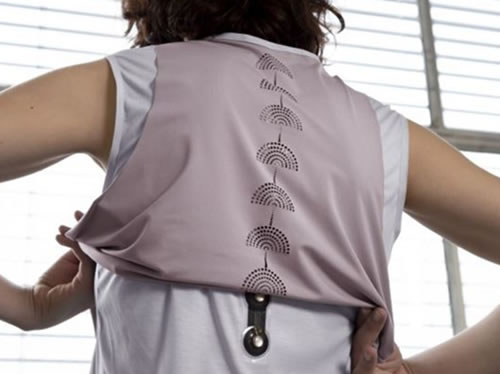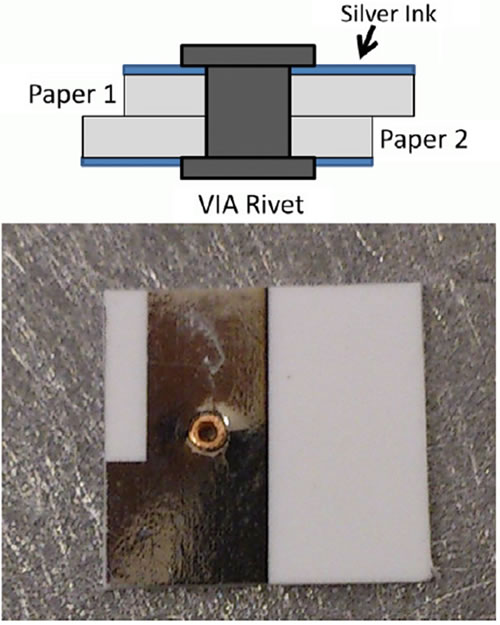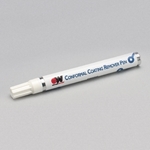Flexible Electronics Soldering Challenges: CircuitWorks Conductive Epoxy to The Rescue

The recent years have witnessed a tremendous transformation in electronics, from rigid forms to flexible, soft, and stretchable forms. These technological advancements will allow future electronics to be light and adaptive to the human body. In the quest for fully flexible commercial electronics (such as printed components and tracks on flexible substrates), the first practical step could be hybrid printed electronics (standard components and printed tracks on flexible substrates).
This technological innovation poses new challenges to electronics manufacturers. Two of the major challenges involve the mounting of electronic components on flexible substrates and establishing electrical connection between layers. Therefore, electronics manufacturers must come up with technological breakthroughs to keep pace with the rapid development in the field of printed electronics.
This article discusses the potential of hybrid printed electronics (particularly as wearable gadgets) and provides some examples. We then compare various methods of mounting electronic components on flexible substrates and highlight Chemtronics’ products which aid electronics manufacturers to address these challenges.
What are Flexible Electronics?
Generally, flexible electronics circuits involve a flexible substrate such as Polyethylene terephthalate (PET) or Kapton. These substrates have low surface roughness and provide protection against oxygen and water. Paper is another substrate that, in addition to being inexpensive, is environmentally friendly. All of these substrates have the capability to be used as wearable gadgets.
To maintain continuity even after numerous flexing cycles, the conductive traces must be composed of either a flexible metal with high fatigue strength or a conductive polyester material. Hybrid-printed electronics is a class of flexible electronics in which only the substrate is flexible whereas the components are standard electronic components (Silicon ICs) and not printed.
Applications of Hybrid-Printed Electronics
Hybrid-printed electronics find extensive application in the healthcare sector. Within this realm, researchers are actively engaged in developing comfortable, skin-like electronic devices capable of monitoring vital signs, tracking the progress of skin wound healing, and analyzing bodily fluids for various substances.
Wearable electronics now enable the measurement of numerous biological signals, including temperature, heart rate, respiration rate, blood pressure, and pulse oxygenation [1]. These wearable devices have the potential to reduce or eliminate expensive and prolonged hospital stays. Examples of some wearable gadgets are listed below and shown in Figure 1 - Figure 3.
- Motion-tracking sportswear by Niraxx,
- MYSA Relaxation Shirt to monitor and relieve stress symptoms
- Wearable ECG sensor [1]
- Health patch for cardiac, lung or bowel conditions [2]

Figure 1: The MYSA shirt with vibration motors that provide haptic feedback [3]

Figure 2: Wearable ECG sensor [1]

Figure 3: Health patch for cardiac, lung or bowel conditions [2]
To track expensive items, printed RFID labels are affixed onto products for logistical purposes. Typically, these tags consist of a silicon integrated circuit (IC), along with a printed antenna and printed sensors [1].
Mounting Electronic Components on Flexible Substrates – a Challenge
To make the best out of hybrid-printed electronics, there are some challenges that need attention. The first challenge for PCB manufacturers is to identify the best component mounting method in hybrid-printed electronics since no standardized method exists. The soldering method used in conventional electronics is very different to the roll-to-roll process used in flexible printed electronics. The second challenge is to manage dual layer circuits that use vertical interconnect access (VIAs) for electrical connection in conventional PCBs.
In one case study [4], the authors compare performances of several conductive adhesives in terms of resistance offered and adhesion strength. Table 1 shows the list of adhesives evaluated. For experimental purpose, a 300-μm thick Canon paper PT-101 substrate was selected. Nano particle Silver ink was used to print circuit traces. Test patterns are two 0.7 cm long and 0.1 cm wide lines with a spacing of 0.1 cm in between.
For the evaluation of resistance between components and printed tracks, 0 Ω SMD resistors (package 1206) were mounted on the silver traces using all four adhesives. It is important to mention here that during soldering, the solder tip never touched the temperature-sensitive silver ink. Figure 4 best depicts the experimental setup. The samples using Conductive Silver epoxy were passed through convection oven (90 oC) for 20 minutes in order to harden the glue.
Table 1: List of adhesives evaluated
|
Manufacturer |
Product Description |
Resistance Specified |
|
Chemtronics, CW2400 |
Conductive Silver Epoxy Glue |
< 0.001 Ω cm volume resistivity |
|
3M, Nr. 9705 |
Anisotropic conductive particle tape |
< 0.3 Ω contact resistance |
|
3M, Nr. 9713 |
Isotropic conductive fiber tape |
0.5-2.5 Ω contact resistance |
|
not provided |
Solder paste and wire 60% Pb & 40% Sn |
not provided |

Figure 4: 0 ohm resistors mounted on silver lines using four types of adhesives [4]
To calculate the average contact resistance, 10 resistors with four types of conductive adhesives were attached to silver traces. To evaluate adhesion strength, the resistors were pulled up and the resulting force was measured until they came off the substrate. Table 2 summarizes the results of both tests.
It is evident that Chemtronics’ manufactured Silver Epoxy Glue (CW2400) offers the least contact resistance, whereas in terms of pull strength silver epoxy lies in second place. Solder joints offer the highest pull strength of 23 N.
Table 2: Resistance and adhesion strength offered by SMD components [4]
|
Adhesive |
Resistance (Ω) |
Pull Strength (N) |
|
Silver epoxy |
0.4 ± 0.15 |
7.2 ± 2.1 |
|
Anisotropic tape |
1.4 ± 0.45 |
4.0 ± 0.4 |
|
Isotropic tape |
15 ± 11 |
2.0 ± 0.3 |
|
Solder |
1.5 ± 0.3 |
23.0 ± 1.3 |
Another way of evaluating contact resistance is to connect components through VIAs. In the case study [4], VIAs are made by drilling a hole through two Silver printed (back-to-back) tracks on the paper substrate. To make sure there is a strong electrical continuity and mechanical stability, a 0.6 mm Copper manufactured VIA rivet was placed in the hole, and both ends of the hole were then sealed with silver epoxy.
Figure 5 demonstrates this little setup. The contact resistance test for this case was measured on a dual-sided printed circuit shown in Figure 6. With VIA rivet, the contact resistance was found to be 1.45 ± 0.61. VIAs introduce significant resistance (262% increase) and therefore it’s a good practice to minimize VIAs in printed electronics.
Regarding the better contact resistance of Silver epoxy, a SEM analysis in Figure 7 shows that conductive Silver epoxy tightly fills the spaces between component and track. The absence of any voids indicate uniform spread and the superiority of the conductive Silver epoxy in terms of contact resistance. The case study in [4] shows clear voids when adhesives other than silver epoxy were used and hence those adhesives introduce greater contact resistance.

Figure 5: Copper VIA rivet connecting two Silver tracks on both sides [4]

Figure 6: Dual sided circuit with VIA rivets covered with Silver epoxy [4]

Figure 7: SEM analysis of resistor attached to paper substrate using Silver epoxy [4]
Limitation of Silver Epoxy
Although silver epoxy demonstrates promising results, the reader must also know its limitations before employing it on circuits. For very small pitch components like microcontrollers, silver epoxy may not be the ideal adhesion method because of its vulnerability to cause short circuits. In that case, Anisotropic conductive adhesives can serve as the right option owing to its conductivity in only z-direction [4].
Chemtronics - The future of flexible electronics
Being the industry leader in solutions for electronics, Chemtronics offers products that can define the future of flexible electronics. CircuitWorks Conductive Epoxy (CW2400), which offers excellent electrical conductivity and mechanical stability, is the ideal product for electronics manufacturers interested in developing flexible electronics.
This silver-based epoxy offers a very low resistivity of (< 0.001 Ωcm) and is best suited for solderless electrical connections. The case study [4] uses the same product to achieve minimum contact resistance. Moreover, some other studies [5] [6] have successfully made use of CW2400 Silver Conductive Epoxy. Besides Silver Conductive epoxy, CircuitWorks offers Silver Conductive Pens for drawing traces on flexible substrates. With a conductivity range of 0.02-0.05 ohms/sq/mil, these pens may provide the technological breakthrough in the field of printed electronics. CircuitWorks Flex Conductive Pen (part#CW2900) is engineered to flex without cracking.
To protect flexible PCBs from wash and stress damage, it is a common practice to coat them with Silicone or some other coating [7]. Konform SR Silicone Conformal Coating and Konform SR-X Silicone Conformal Coating by Chemtronics provide protection to delicate circuit components and flexible printed circuit boards. Both products offer excellent insulation properties and superior transparency.
For more information or technical support, contact Chemtronics at askchemtronics@chemtronics.com or 678-928-5845.
References
[1] A. T. S. M. J. T. C. B. A. C. A. Yasser Khan, "A New Frontier of Printed Electronics: Flexible Hybrid Electronics," Advanced Materials, vol. 32, no. 15, pp. 1-29, 2019.
[2] TNO, "Health Patch Platform," HoIst platform, [Online]. Available: https://humancentricwearables.holstcentre.com/projects/health-patch-platform/. [Accessed 29 6 2023].
[3] TNO, "TNO," TNO, [Online]. Available: https://www.tno.nl/en/healthy/flexibele-en-vrije-vorm-producten/hybrid-printed-electronics/. [Accessed 29 6 2023].
[4] A. M. S. H. M. H. J. S. C. H. H. O. a. H.-E. N. Henrik A Andersson, "Assembling surface mounted components on ink-jet printed double sided paper circuit board," Nanotechnology, vol. 25, no. 9, pp. 1-9, 2014.
[5] A. M. E. C. E. S. L. H. K. M. Chaston, "Shear wave ultrasonic coupling performance of different adhesives," Insight - Non-Destructive Testing and Condition Monitoring, vol. 50, no. 11, pp. 633-636, 2008.
[6] K. D. K. &. D. D. L. Chung, "Electrically conductive adhesive and soldered joints under compression," Journal of Adhesion Science and Technology, vol. 19, no. 11, pp. 1003-1023, 2005.
[7] X. T. C. C. V. K. Shahood uz Zaman, "Wash Analyses of Flexible and Wearable Printed Circuits for E-Textiles and Their Prediction of Damages," MDPI, 2021.





